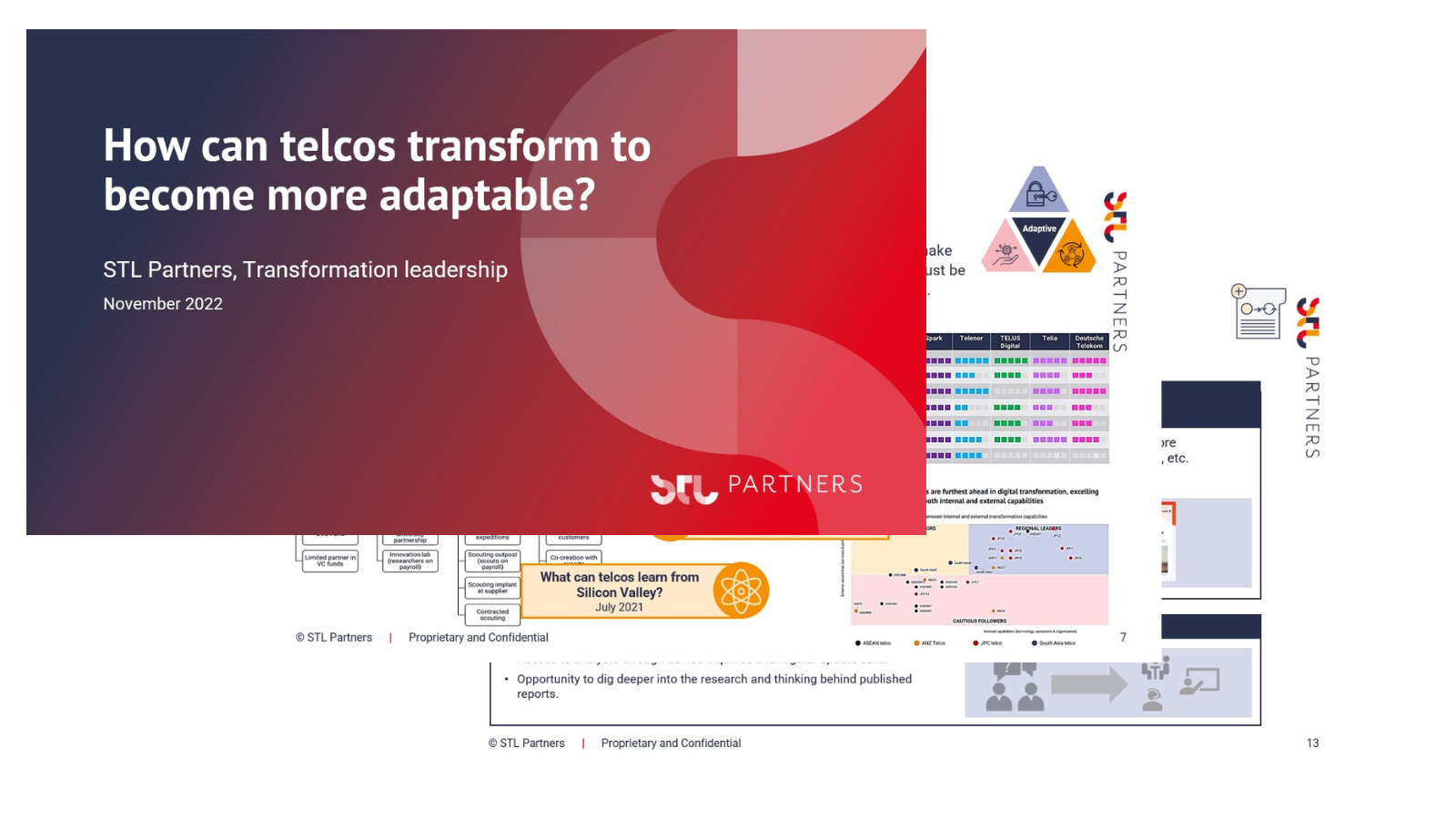
The emergence of service providers
Thanks to the “democratisation” of shared spectrum, virtualised networks, fibre and cloud – plus the demands of industry, government and local communities – a plethora of new service providers are emerging in the 5G-era.
New service provider types

Source: STL Partners
In a recent report, New telcos: A field guide, STL Partners classified these into three main groups of service provider types, with the remainder grouped into a “miscellaneous” category for completeness.
- “Evolved” traditional telcos: operators, or units of operators, that are recognisable from today’s companies and brands, or are new-entrant “peers” of these. The category includes separate systems integration / enterprise units of telcos, crossover between fixed and mobile operators and greenfield telcos, among others.
- Adjacent wireless providers: service provider types that have been established for many years, but which are now overlapping ever more closely with “traditional” telcos. Examples include tower companies, neutral-host networks and satellite companies.
- Enterprise and government telcos, i.e. large organisations shifting from being “users” of telecoms, or building internal network assets, towards offering public telecom-type services. They include industrial / enterprise specialist MNOs, government and municipal networks and utility companies offering telecom services.
- Others: the catch-all category that spans various niche innovation models. One particular group here, decentralised/blockchain-based telcos, is analysed in more detail in the report. The category includes community networks, industrial systems vendors, property companies and advanced (“thick”) MVNOs.
Each of these groups poses different challenges to traditional telcos, depending on the specific national market, and the focus areas for each operator. For example:
- The implications for incumbent MNOs in markets where greenfield operators like Rakuten Mobile and Dish have launched include the need to compete with lean new rivals, with no technology legacy or existing network loads. These “evolved” telco competitors are often willing to undercut prices substantially and make a huge splash of publicity. At the same time, their emergence is also leading to telco wariness in other markets, especially around M&A and market consolidation, in case regulators decide that mergers need to be paired with the arrival of a new entrant.
- Tower companies (under the category of Adjacent wireless providers), while not new, own important parts of network infrastructure that used to be considered fundamental assets for MNOs. Players like Cellnex and Digital Bridge are now moving up the value chain and increasingly encroaching on the broader services space that 5G telcos are hoping to occupy themselves. This means that traditional operators risk being squeezed by technology application and hyperscale firms on one side, and players like these tower companies on the other. While this may mean that operators are able to become more opex-driven than capex dependent, it may also reduce the scope for vertically-integrated services innovation going forward.
The net effect of new service providers
While the net effect of the emergence of new service providers is hard to predict, what is clear is that it will be more difficult for traditional operators to monetise general-purpose networks in the future. Our report contains several recommendations for telcos as they navigate a new reality in which they will likely need to embrace customisation and localisation in order to compete with new, nimble and specialist players in multiple domains.
STL Partners related reports
Download this article as a PDF
Read more about growing enterprise revenues
Growing Enterprise Revenues overview pack
Our overview pack explores how the telecoms industry can leverage new business models to meet enterprise customer needs
Network APIs: Unlocking new value in the telco cloud
Network APIs may offer an answer to the question of how to monetise recent and upcoming telco cloud deployments. Virtualised networks upgrade APIs and enhance the value they offer to developers and customers. To unlock their potential, telcos should focus on optimising their commercial models.
Network Futures overview pack
Our Network Futures Service provides a roadmap for new network ownership, regulation and partnership models, and insights. into new technologies, industry dynamics and new players.
Core-as-a-Service since 2018: Wgtwo
Core-as-a-Service is not a brand new concept. Working Group Two, aka wgtwo – a smaller Scandinavian outfit, has been offering Core-as-a Service since 2018. We spoke to their CEO Erlend Prestgard about why wgtwo’s original mission to help telcos extract more value from connectivity remains as relevant in 2022.





